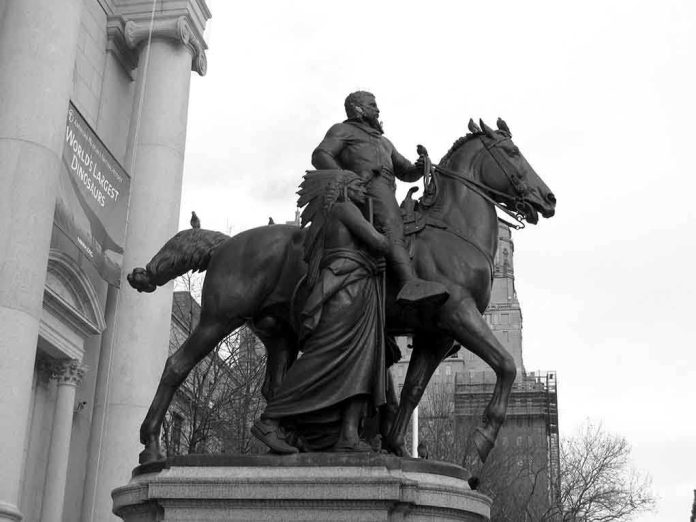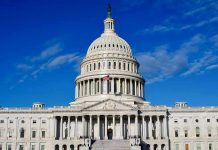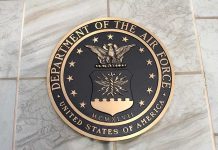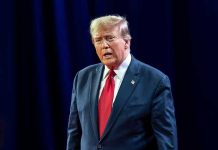
One man, in a matter of minutes, transformed the revered halls of the Washington State Capitol from a symbol of American dignity into a scene of shattered glass, scorched emblems, and toppled history—leaving us to ask: What compels a person to desecrate the very icons that define a nation’s spirit?
Story Snapshot
- An intruder breached Washington’s Capitol, igniting fire and chaos in its historic rotunda.
- State troopers responded swiftly, apprehending the suspect after significant vandalism.
- Busts of George Washington and Martin Luther King Jr. were knocked over, symbolizing an attack not just on property but on American ideals.
- The event has sparked renewed debate about security, mental health, and the meaning of civic legacy.
Capitol’s Night Shattered by a Lone Intruder
Capitols are built to deter chaos. Yet, in Olympia, a man pierced the heart of Washington’s democracy, not with protest signs or speeches, but with violence. After shattering a glass door, he set a rug and a flag ablaze, sending acrid smoke curling up the marble stairways. The quiet solemnity of the rotunda—home to the state’s most treasured symbols—was replaced by the frantic clangor of alarms and the unmistakable scent of burning fabric. Each act seemed calculated to wound the building’s essence, not just its structure.
Troopers rushed in. Their arrival, decisive and unceremonious, ended the spree before more damage could be done. In those tense moments, the Capitol transformed from a seat of government to a crime scene. The suspect, reportedly without clear motive, was subdued and taken into custody. Law enforcement’s rapid response was lauded as a testament to both their readiness and the constant, unseen threats that linger at the edges of public institutions. But as sirens faded, the evidence of deeper questions remained: Who was this man, and what rage or despair drives someone to desecrate the symbols of liberty and justice?
Symbolic Destruction: More Than Broken Marble
The busts that tumbled that night were not random targets. George Washington, the nation’s founding father, and Martin Luther King Jr., America’s apostle of justice, sat at the symbolic center of the Capitol’s rotunda. Their likenesses, toppled and sprawled on the marble, signaled a strike not just against individuals but against the very ideas they represent—unity, freedom, and the struggle for a more perfect union. The fire set to the flag and rug compounded the message: this was an assault on the fabric of American identity itself.
Many observers saw the event as a microcosm of broader anxieties. In an era marked by political division and rising civic unrest, the vandalism at Olympia’s Capitol was interpreted by some as an unsettling reflection of national wounds. Yet, the deliberate selection of such potent symbols—Washington and King—suggests a deeper level of intent, raising uncomfortable questions about the attacker’s grievances and mental state.
Security, Mental Health, and Uncomfortable Parallels
The breach has reignited debate over Capitol security. Critics question how a lone individual could penetrate what should be a secure seat of government. State officials, pressed for answers, have promised a thorough review of security protocols and potential upgrades to prevent future incidents. For many, the event has reinforced the argument that even in times of relative peace, institutions must remain vigilant against unforeseen threats.
But beyond the practical is the psychological. The suspect’s motives remain murky, with some suggesting mental health struggles may have played a role. This has revived calls for a more robust mental health system, particularly for those at risk of violent outbursts. Others, however, see the incident through a different lens, emphasizing personal responsibility and the need for swift, uncompromising justice when American ideals are attacked. In both perspectives, the Capitol break-in is a warning: neglecting security or mental health can erode public trust in foundational institutions.
Legacy and the Fragility of Civic Symbols
The scars from this night will be visible long after the marble is polished and the flag replaced. For many Americans, the attack on Olympia’s Capitol is a reminder of the fragility of civic symbols—and the ease with which they can be defaced or destroyed. Yet, the public’s response, from social media outrage to calls for reflection, reveals a deeper resilience. The Capitol will be repaired, the busts restored, but the questions raised by this incident—about security, mental health, and the meaning of American unity—will linger, demanding answers from leaders and citizens alike.
As Olympia rebuilds, the story remains open-ended. Will renewed vigilance and introspection follow, or will complacency set in until the next breach? The nation’s eyes are on those marble halls, watching for how America chooses to defend its legacy—not just with locks and laws, but with the courage to confront what drives someone to attack the heart of its democracy.
Sources:
Vandal sets fire inside Washington state Capitol building, causes ‘significant’ damage












